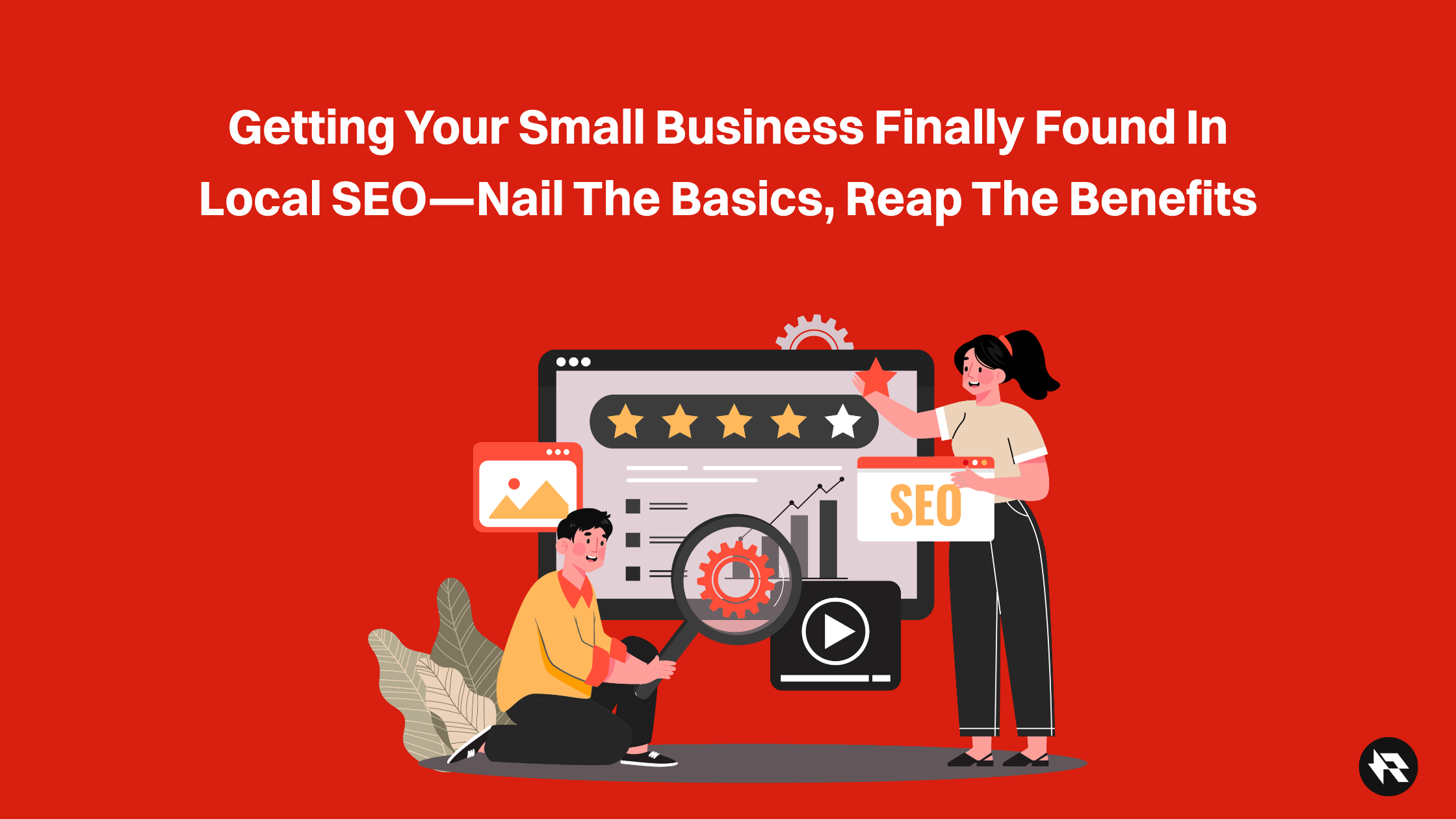
You know how valuable local search is for physical businesses—and chances are, you’ve already seen your competitors in that coveted local 3-pack, or the top three results on Google. You want your small business listed in the top spot to even compete with the nearby bigger veterans of your industry, if only you knew how to play the local search game even better.
It’s likely that you’ve been doing a couple of implementations right. But if you want an even bigger upgrade on your local visibility with a clear-cut strategy and tangible results, this step-by-step blueprint is for you. Find out how local SEO works for your business and the ways to lead the local ranking in the most organic and effective way possible.
Your small business can reap the immediate and long-term benefits of local SEO by creating an effective strategy that will provide you with better local listing positions. It not only helps you reach a wider audience and boost sales, but also builds your reputation as a trusted local authority—giving you a competitive edge over businesses with little to no local search presence.
These are the advantages of having an effective local SEO for a small business:
Local search can help your business rise to the top of your competitors. Through this, you’ll always have the exposure for the majority’s consideration.
Users perform local searches due to an immediate need. Whether one is looking for a 24-hour laundromat nearby or an expert mechanic shop in the area, their intent is clear, and they are often nearing the buying decision phase. By ranking in local search results, your business appears right when they’re ready to act. It gives you the opportunity to convert high-intent searches into real customers.
Consistency in ranking not only brings the clicks to your website or shop page. It brings real people to your door. They search with locations in mind, likely with the need to visit. With local search optimization that ensures all your details across platforms are consistent, visible, and correct, you will likely notice an increase in store visits
Now more than ever, small companies can thrive online and compete with large enterprises. This is because of digitally rooted executions such as local SEO, helping to level the playing field. While big companies focus on targeting regional or countrywide audiences, your small business can zero in on geographic location and the people within its proximity.
With local SEO, you have the advantage of providing local relevance and a deeper connection without the need for a hefty marketing budget.
How does local SEO for small businesses work? Here’s a quick refresher:

Physical businesses should utilize local search, where proximity plays a huge role in the customer’s decision-making to avail of their offerings. Smaller businesses can focus even more on this practice as it’s generally free.
Here are some examples:
Local SEO has three key components that make it an effective strategy in creating a strong online presence:
Local SEO does not work alone and should never be just a one-time action. It is part of a larger organic SEO effort for your business, working alongside other aspects in digital marketing. Its main job is to push for visibility, targeting customers within a location who are ready to engage or buy.
If you do it the right way, you see the benefits of local SEO not only in the improvement of your local rankings. It also strengthens your general SEO efforts across other platforms.
To be on top of that 3-pack, you need to be on top of local search ranking. Here’s a detailed breakdown of the most impactful local SEO ranking factors—and how to optimize for each one.
Your Google Business Profile is the single most important factor you need to focus on if you want to get a spot in the local 3-pack.
Your website is the leading source of information about your business. It should contain all information about who you are, the products and services you offer, and the place where you operate.
Follow these website pointers to support your local SEO efforts:
The reviews you have are a key trust signal for both Google to rank you and for your potential customers to consider engaging with you.
Gaining local backlinks is among the strongest indicators of your relevance in the community, and it’s a good signal for Google to consider you on top.
You can dominate the local search for your business if you have a clear and actionable plan to be the leading authority in your location. This three-phase organic local SEO strategy guides you from the moment you set up to maintaining that long-term success you can sustain.
.webp)
This is the groundwork of all your local SEO efforts. Skipping this phase is not ideal if you want a successful result.
The foundation’s now in place, and you’re ready to tap into Google to notice you. You want Google—and the users—to see you as a relevant source for local searches. Here’s how you can effectively do it:
It’s now time to build trust and gain relevance within the community by growing your digital footprint beyond your website. You can effectively gain off-site authority through these steps:
All the strategies we’ve covered—from optimizing your Google Business Profile to building local backlinks—are designed to help you reach the critical goal: getting found by your ideal customers at the exact moment they’re searching for what you offer.

And you know you are already in the game when your local SEO strategy translates to real visibility in the following areas:
The Local Pack
That top section of Google’s search results features three local businesses along with their location, ratings, and contact info. Ranking here significantly increases clicks and credibility. A well-optimized GBP, strong reviews, and local relevance are key to reaching local SEO dominance.
Google Maps Visibility
The presence of your business on Google Maps drives online traffic and physical store visits. It is a must to keep your location details accurate, provide fresh and original photos, and maintain regular activity on your GBP as a strong signal that your business is still operating.
Local Organic Search Results
Apart from Google’s local pack and maps, local SEO pushes your website to appear in standard search listings for geographically relevant keywords. If you have optimized location pages, local schema, and relevant content, along with the right website SEO help, you increase your chances of ranking across the board.
As we’ve walked through the complete framework of dominating the local search for your small business, keep in mind that all local search ranking factors must be covered–from the foundational setup to advanced optimization.
But remember that local SEO is not a one-time task. It requires consistency in organic local relevance while working on your overall innovative SEO strategy, until one day, you wake up with your business at the top of the Google local pack, as you envisioned it to be.
If you need an expert to guide you through local search optimization and provide an effective overall SEO strategy, you need a partner you can rely on. ReachGiant, a leading SEO expert in the USA, helps small businesses dominate local rankings and grow their business organically.
Are you ready to rise to the top of local search? Let us turn your local presence into a competitive advantage. Book a meeting with ReachGiant and get started with local organic SEO services today.
